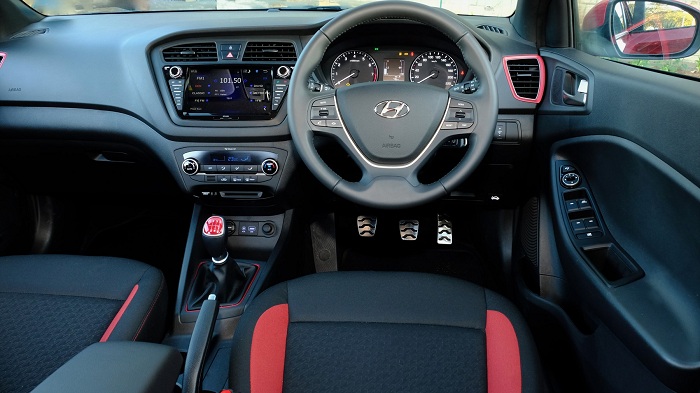Earlier this year, the brand launched an updated i20 to the local market and introduced a new Active variant which, bizarrely, is based on the outgoing i20. I had a chance to sample this somewhat oddball recently.
Chasing sales
It's a simple and proven formula; you take a standard hatchback, add some rugged cladding, roof rails, new wheels and increase the ride height a smidge and voila, a pseudo-crossover is born. Products such as this are successful, with the Renault Sandero Stepway, the Volkswagen Cross Polo or Vivo Maxx being prime examples. The introduction of the i20 Active therefore simply makes sense.
Crossover looks
Aside from using the outgoing i20's front grille and rear tailgate, the Active differentiates itself from the rest of the range thanks to the addition of roof rails, 16-inch alloy wheels, 20mm additional ride height, faux front and rear skid plates as well as black cladding around the wheels arches.
Overall, the Active looks good and will certainly appeal to those looking for the low running costs associated with a small hatchback and the aesthetics of a small crossover.
Featured inside
Inside the Active, there are either red or blue accents throughout the cabin, depending on the exterior colour specified. My tester was a red unit, meaning that the inserts were red too.
The funky interior colour scheme certainly adds a touch of flair to the cabin, with a further highlight being a new touchscreen infotainment system that adds satellite navigation for an additional R2 500. In addition to this, Hyundai has also upgraded many of the interior materials for a more premium look and feel.

In general, the latest i20 feels rather sturdy from a build quality perspective while the materials appear of a high enough quality to stand the test of time. From a practicality perspective, the front and rear passenger space is respectable while the boot, which measures at 285-litres, isn't class leading, but rather simply sufficient.
In terms of standard spec, the Active gets the aforementioned infotainment system, automatic climate control and a multi-function steering wheel, while surprise omissions are cruise control and as well as an Electronic Stability Programme.
Driving Active
An area of concern was in the powertrain department, where the Active sports a rather lethargic 1.4-litre naturally aspirated petrol motor mated to a six-speed manual gearbox.
The power output is rated at 74kW/133Nm which, when combined with a kerb weight of just over 1 000kg sounds like it might be sufficient, but in reality, the car feels sluggish and struggles in overtaking situations, Hyundai claims a fuel consumption figure of 6.7-litres/100km, but with the car needing revs to progress meaningfully, I saw the consumption figure sail north of 8.5-litres/100km.
Verdict
With a sticker price of R279 900, the i20 Active is certainly not a bargain, but it's also not incredibly expensive. The more old-school nature of its powertrain, basic features list and indeed, its extensive and impressive five-year/150 000km warranty, with an additional two-year/50 000km piled on top of that for the drivetrain, which also includes a three-year/60 000km service plan, makes the i20 Active a good long-term ownership proposition, which appeals to consumers in this day and age.

















